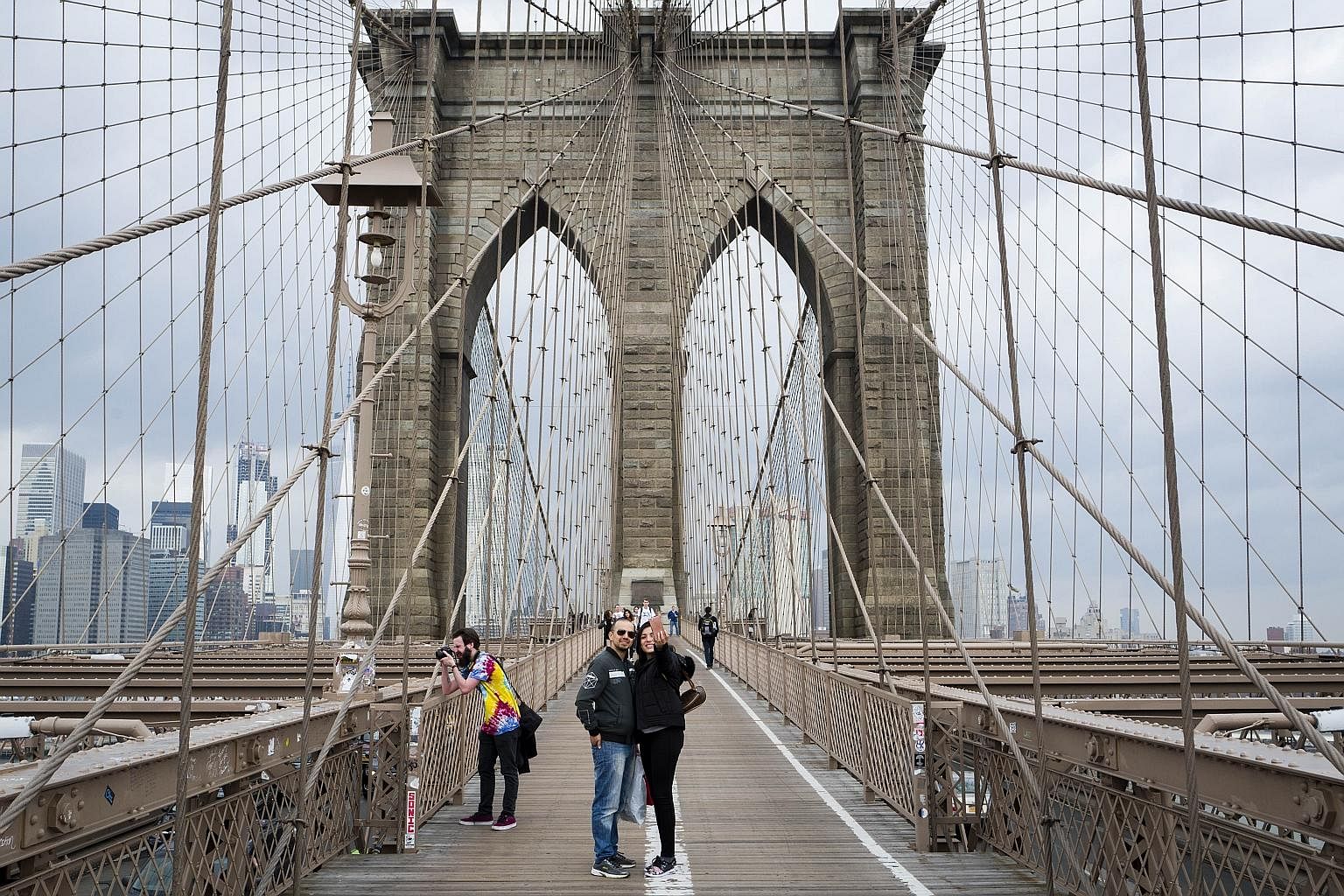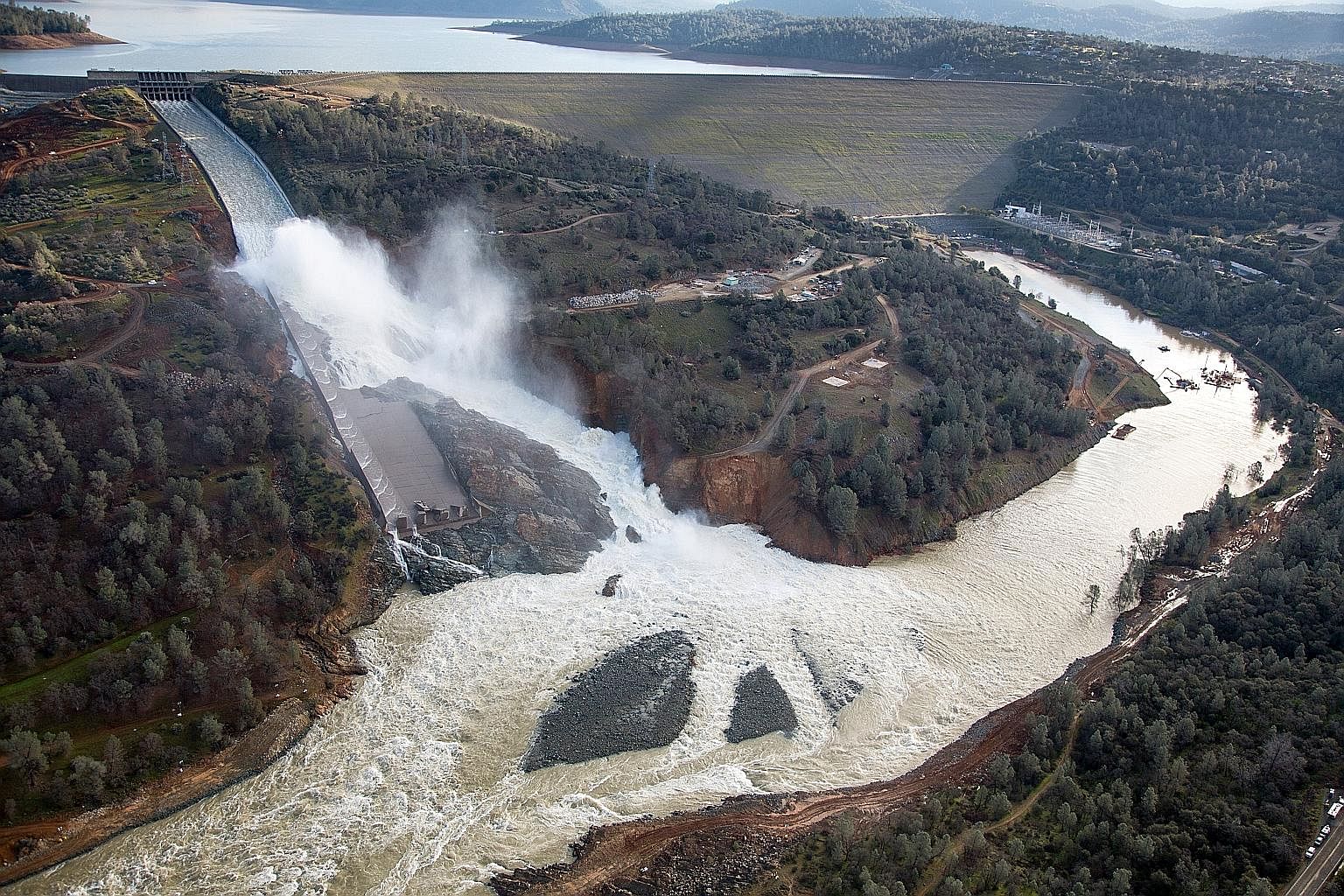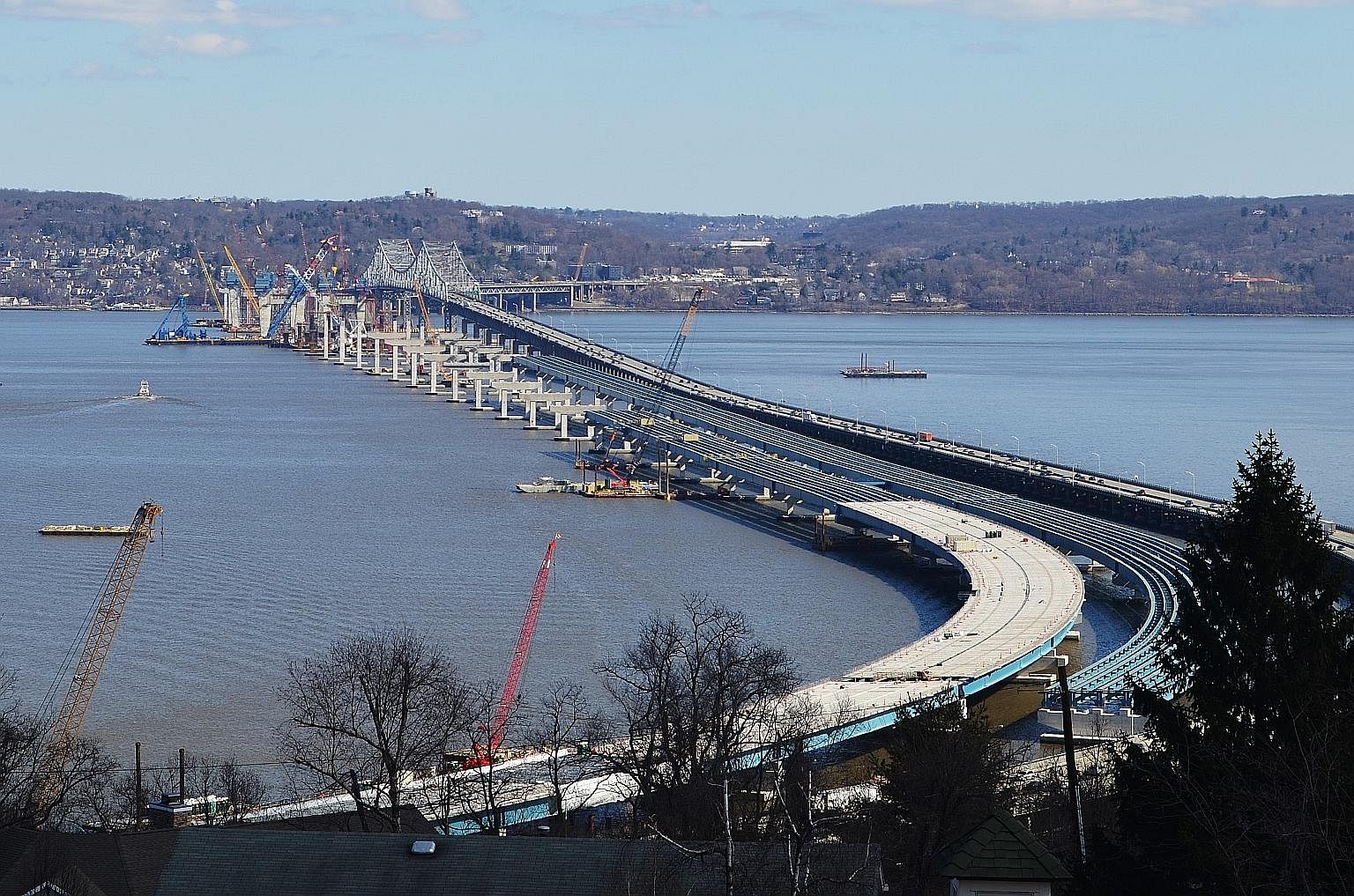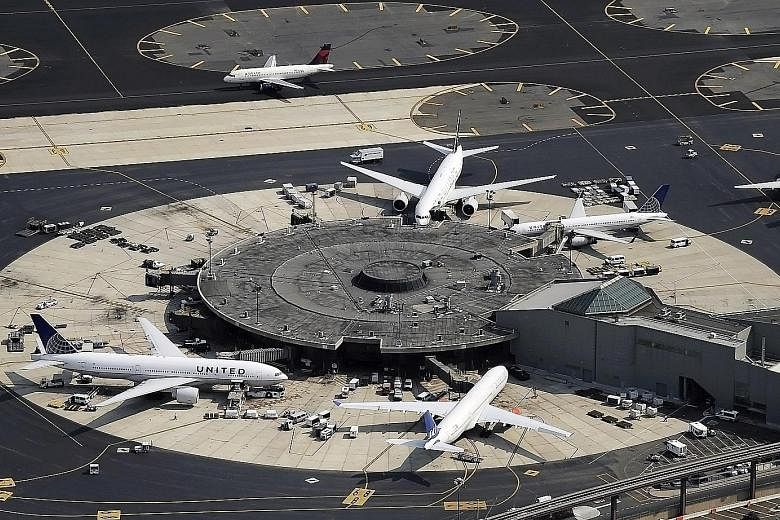Thousands of people walk on New York City's well-known Brooklyn Bridge every day, but few know that the 146-year-old bridge is actually not as safe as it looks.
The bridge is "structurally deficient", said the American Road and Transportation Builders Association. This means that one or more of its key elements, such as the deck, superstructure or substructure, is in poor condition. The bridge "may not be imminently unsafe" but is in "need of attention", it added.
It is not just Brooklyn Bridge.
Across America, two-thirds of the country's roads and nearly 150,000 bridges are in need of repair - some desperately - as a result of a steady decline in federal spending on infrastructure after a 1960s post-war boom when the interstate system and hundreds of airports were built. Ports and waterworks were also expanded. Federal spending on transportation infrastructure has declined from 1 to 0.5 per cent of gross domestic product (GDP) over the last 35 years, the non-partisan Centre on Budget and Policy Priorities said in February last year.
Many dams are also in bad condition. In February, almost 200,000 residents had to evacuate their homes as a result of a damaged spillway - which allows the controlled release of water from the dam - at the Oroville dam in southern California, built in 1968 and the nation's tallest.

Just weeks after the narrow escape from catastrophe, damage was detected at Clifton Court Forebay, another massive water reservoir created in 1969 in the same state.
"Everybody is facing the fact that the infrastructure is beginning to age," Ms Debra Man, assistant general manager of the Metropolitan Water District of Southern California which supplies nearly half the state's population with water, told the local Sacramento Bee paper.
While President Donald Trump aims to push through a US$1 trillion (S$1.4 trillion) infrastructure Bill, with the money spread over 10 years, the Bill may meet resistance from fiscal conservatives wary of massive government spending.
Also, while Mr Trump wants the infrastructure Bill because it will unleash job creation, he could remain bogged down as the Republican Party focuses on issues like healthcare, immigration curbs and overhauling the tax structure instead.
Meanwhile, states are getting their wish lists ready, and they are long. Cities like Philadelphia and New York say federal cuts - the latest just weeks ago to public housing in New York - have left them underfunded. Philadelphia constructed its municipal water system more than 200 years ago. It still has active pipes installed in 1824. Most of its water delivery system uses cast iron pipes, which fell out of favour in the 1960s because they are prone to rust. Half of its sewerage infrastructure is made of old bricks.
Philadelphia is not alone. An hour and a half up the north-east corridor rail route from Philadelphia, challenges loom even larger in New York, a city with a population at an all-time high of 8.5 million and projected to reach 9.1 million in 2030.

"The city is thriving, but its very appeal has put additional strains on infrastructure. We can't begin to meet our true needs unless we get a significant amount of help from the national government," Mr Carl Weisbrod, until recently director of the city's Department of City Planning, told The Straits Times.
The city's subway system is more than 100 years old and its roads notoriously potholed, with many of its bridges in dire need of repair.
New York City stands far and above other American cities, accounting for some 10 per cent of the country's GDP. Yet it has suffered from "decades of disinvestment" and faces "acute vulnerabilities" as its infrastructure ages, said Mr Weisbrod. "We need to expand the water and sewage systems. All bridges and tunnels are in dire need of repair. We need to reconstruct the Brooklyn-Queens Expressway," he added.
In 2012, superstorm Sandy exposed New York's vulnerabilities, paralysing the city and leaving a chunk of its commercial heart Manhattan without power for days. "As a coastal city, and in expectations of a rise in sea level, we are racing against time to protect our neighbourhoods, and business centres like lower Manhattan, from the increased risk of flooding," Mr Weisbrod said.
It is not all doom and gloom.
There have been pockets of urban renewal across American cities.

Downtown Chicago and Cleveland are booming. New York City is known for innovative public projects like the High Line, an abandoned elevated railway line converted to a public park.
In Philadelphia, one of the city's oldest playgrounds at the ancient Shot Tower, which once manufactured bullets, was renovated at a cost of US$660,000. It is now a thriving children's recreation centre.
A new US$225 million park which will connect the city to its historic waterfront over and across the busy I-95 interstate, will start construction in 2020. A North East Corridor Future project envisions high-speed trains slashing travel time up and down the east coast.
For now, though, the challenge is to bring existing infrastructure up to being in a good state of repair.
"We are glad this issue is being paid attention to, it's been ignored far too long," Ms Anne Fadullon, director of Philadelphia's Office of Planning and Development, told The Straits Times. "But part of this discussion has to be about maintaining the infrastructure we have."
WATCH VIDEO:
New York and Philadelphia are crumbling
http://str.sg/4XgZ

